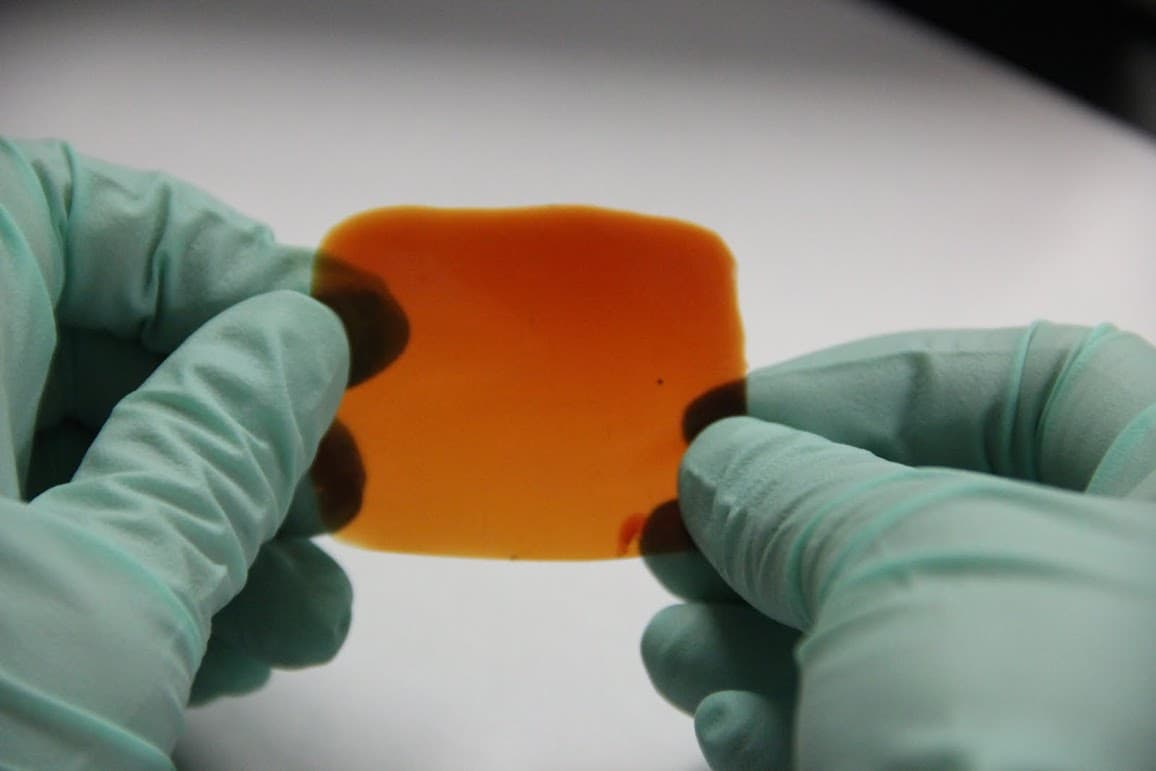Self Healing Artificial Polymer Could Aid Development Of Artificial Muscle
In what could prove to be a new breakthrough in prosthetic and robotic field, scientists have successfully synthesized a super stretchy polymer which stretches about hundred times its length and self-heals at room temperature. Researchers at University of California who worked on the development of the novel material could also make the material twitch by exposing it to an electric field, causing it to expand and contract. Thereby making it potentially useful as an artificial muscle too.

Metal ions were added thereafter, which have a chemical affinity for the ligands. When this combined material was strained, the knots loosened and allowed the ligands to separate. But when relaxed, the affinity between the metal ions and the ligands pulled the fishnet taut. The result was a strong, stretchable and self-repairing elastomer; reported the researchers.
More work though needs to be done to increase the degree to which the material expands and contracts to control it more precisely. Researchers also hope to create artificial skin using the material that might be used to restore some sensory capabilities to people with prosthetic limbs.
This latest advance could sure pave a way for a whole new generation of wearable electronics, or medical implants that would last a long time without being repaired or replaced.
The research was published in the journal #-Link-Snipped-#.
Source: #-Link-Snipped-#

New, extremely stretchable polymer film which can repair itself when punctured
The property of extreme stretching and self-healing ability of the material is attributed to a type of chemical bonding process known as crosslinking involving connecting linear chains of linked molecules in a sort of fishnet pattern. It was found that the polymer could self-repair at temperatures as low as minus 20 degrees Celsius, or about as cold as a commercial walk-in freezer. Special organic molecules were designed to attach to the short polymer strand, creating a series of structure called ligands.
Metal ions were added thereafter, which have a chemical affinity for the ligands. When this combined material was strained, the knots loosened and allowed the ligands to separate. But when relaxed, the affinity between the metal ions and the ligands pulled the fishnet taut. The result was a strong, stretchable and self-repairing elastomer; reported the researchers.
More work though needs to be done to increase the degree to which the material expands and contracts to control it more precisely. Researchers also hope to create artificial skin using the material that might be used to restore some sensory capabilities to people with prosthetic limbs.
This latest advance could sure pave a way for a whole new generation of wearable electronics, or medical implants that would last a long time without being repaired or replaced.
The research was published in the journal #-Link-Snipped-#.
Source: #-Link-Snipped-#
0
